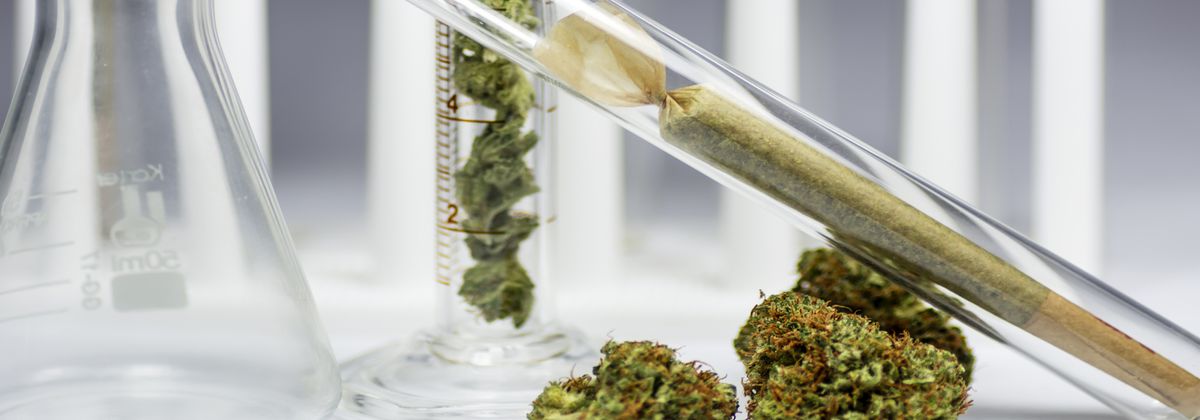As the Empire State forges ahead with its progressive stance on cannabis, New York’s medical marijuana policy is undergoing significant expansion and refinement. This article delves into the latest developments, from the broadening of the market to the focus on social equity, providing an essential guide to understanding the current landscape of New York’s medical marijuana policy.
Key Takeaways
- New York has opened its licensing process, allowing for a significant increase in medical marijuana retail licenses, including to multistate operators.
- The state has faced various challenges, including lawsuits that have influenced the structure and rollout of the recreational cannabis market.
- There have been notable regulatory milestones, such as the launch of the first general licensing application period and the approval of microbusiness licenses.
- Policies are being put in place to enable home cultivation of cannabis, moving towards legal home-grown options for residents.
- New York is prioritizing social equity by offering retail licenses preferentially to individuals with marijuana convictions and supporting justice-affected applicants.
The State of New York’s Cannabis Market

Recent Developments in Licensing
In a significant move, Governor Hochul announced that the Cannabis Control Board has approved over 100 licenses, marking a pivotal moment for New York’s cannabis market. This first nonconditional licensing window opens up new opportunities for businesses and sets a precedent for the industry’s growth.
However, the licensing process has not been without its challenges. Industry stakeholders have raised concerns over the Office of Cannabis Management’s (OCM) selection process, describing it as ‘alarming’ and indicative of last-minute goalpost shifts. The Pacific Legal Foundation’s involvement in challenging the state’s Social Equity Entrepreneur Development (SEED) licensing preferences underscores the contentious nature of the current system.
Despite the hurdles, the licensing system continues to evolve. A recent court ruling by Judge Bryant has partially lifted a suspension on licenses, allowing a fraction of the conditional licensees to proceed. This decision reflects a cautious approach to maintaining industry stability while addressing legal concerns. The table below summarizes the current status of licensing approvals and challenges:
| Status | Number of Licenses | Action Taken |
|---|---|---|
| Approved | Over 100 | First nonconditional window opened |
| Conditional Approval | 30 out of 463 | Partial lift of suspension |
| Challenged | – | Legal foundation joins lawsuit |
The state’s commitment to advancing the cannabis market is evident, but the path forward is marked by legal and regulatory complexities that must be navigated with care.
Challenges and Lawsuits Faced
The path to establishing a robust cannabis market in New York has been fraught with legal hurdles. A recent ruling by a NY Judge has signaled a potential increase in legal challenges, particularly concerning the state’s conditional adult-use dispensary licenses. This comes on the heels of a lawsuit filed by Boies, Schiller and Flexner, which underscores the clash between state legalization and outdated federal laws.
Several lawsuits have highlighted the difficulties faced by applicants in navigating the regulatory landscape. One such case pointed out the unfairness in the regulations regarding proximity protections, where applicants were forced to choose retail locations without clear guidance on protected areas. Another notable challenge came from the Pacific Legal Foundation, which questioned the state’s licensing preferences.
The complexities of the legal environment are not limited to licensing issues. Businesses also grapple with the lack of bankruptcy and trademark protections, and farmers face the denial of federal benefits due to their involvement in cannabis cultivation.
The table below summarizes the key legal challenges and the entities involved:
| Date | Entity | Nature of Challenge |
|---|---|---|
| Oct 25, 2023 | Boies, Schiller and Flexner | Federal vs. State Law Conflict |
| Apr 7, 2024 | Unnamed | Proximity Protection Regulations |
| Mar 11, 2024 | Valencia, AG LLC | Licensing Preferences |
Licensees and applicants alike are expressing their concerns, with many intervening in court to highlight the hardships caused by regulatory delays. The situation is further complicated by the objections from plaintiffs, such as the group of disabled veterans denied license applications, who argue that these interventions may unnecessarily complicate the litigation.
Comparative Analysis of Dispensary Performance
In the evolving landscape of New York’s cannabis market, dispensary performance has become a focal point for stakeholders. The dynamics of the market are influenced by various factors, from consumer preferences to regulatory compliance. A comparative analysis reveals significant disparities in performance across different regions and operators.
- Consumer Experience: Dispensaries that prioritize customer service and product quality tend to outperform others.
- Product Availability: A diverse inventory catering to various medical needs is a key success factor.
- Location and Accessibility: Strategically located dispensaries with easy access see higher foot traffic and sales.
- Regulatory Adherence: Compliance with state regulations is critical for uninterrupted operations and consumer trust.
The interplay between market forces and regulatory frameworks shapes the success of dispensaries. Those that adapt swiftly to changing policies and consumer trends are more likely to thrive.
The market also reflects a tension between the desire for tax revenue and the control of product quality. While some advocate for rapid expansion and availability of dispensary licenses, others emphasize the importance of maintaining high standards for consumer safety.
Advancements in Medical Marijuana Accessibility

Expansion of Retail Licenses to Multistate Operators
In a significant shift, New York has opened its doors to multistate operators (MSOs) in the medical cannabis market. This move has been met with mixed reactions, as it marks a departure from the state’s initial focus on smaller, local businesses. The entry of MSOs is expected to bring substantial changes to the market dynamics, with these organizations bringing in their extensive experience and resources.
The inclusion of MSOs in New York’s cannabis market is a pivotal moment that could reshape the competitive landscape and access to medical marijuana.
However, the cost of entry is steep; MSOs are required to pay a $5 million fee for the privilege of operating new adult-use cannabis retail locations. Despite the high cost, the state has approved six new MSOs, signaling a clear commitment to expanding the market. Each licensee, including MSOs, will be limited to three retail locations, a regulation that aims to maintain a level of market diversity.
The table below outlines the current state of MSO approvals in New York:
| MSO Name | Approval Status | Retail Locations Allowed |
|---|---|---|
| MSO A | Approved | 3 |
| MSO B | Approved | 3 |
| MSO C | Approved | 3 |
| MSO D | Approved | 3 |
| MSO E | Approved | 3 |
| MSO F | Approved | 3 |
While the expansion to MSOs is a notable development, it’s important to consider the broader implications, including the potential impact on the illicit market and the accessibility of medical cannabis for patients.
Impact on Medical Cannabis Firms and Patients
The expansion of retail licenses in New York has had a significant impact on both medical cannabis firms and patients. Medical cannabis companies now face increased competition from multistate operators, which could lead to a consolidation of the market. Patients, on the other hand, may benefit from a broader range of products and potentially lower prices due to the heightened competition.
- Medical cannabis firms must adapt to a more competitive landscape.
- Patients could see more product variety and better pricing.
- Concerns about market dominance by large corporations persist.
The partnership between telemedicine and medical cannabis companies, while offering benefits such as lower-cost certifications, raises questions about market fairness and regulatory compliance.
While some firms may struggle to maintain their foothold, the overall goal of improving patient access to medical marijuana seems to be advancing. However, the lack of guidance on consumption lounges and the potential for market dominance by larger entities remain contentious issues among industry stakeholders.
The Role of Registered Organizations in the Marketplace
In the evolving landscape of New York’s cannabis market, Registered Organizations (ROs) play a pivotal role. These entities, often large multistate operators, have recently gained approval to expand their operations into adult-use retailing. This move signifies a shift towards a more inclusive market structure, akin to the state’s alcohol industry, where supply and retail are distinctly separated to encourage a diverse array of market participants.
The entry of these ROs is expected to bring a wealth of experience and resources to the marketplace, which could lead to improved consumer choices and educational resources. However, it’s crucial for these organizations to navigate the complexities of the market, including the need to allocate 50% of their shelf space to adult-use cannabis products, as well as adhering to strict regulations that prevent cross-tier ownership interests.
The integration of ROs into New York’s cannabis market is a delicate balance of fostering growth while ensuring compliance and fair competition. Their success hinges on the ability to provide value to consumers while operating within the regulatory framework established by the state.
Regulatory Milestones and Application Processes

First General Licensing Application Period
The inaugural general licensing application period for New York’s cannabis market marked a significant milestone in the state’s regulatory journey. The Office of Cannabis Management (OCM) opened applications on October 4th, accepting submissions for 60 days. This window provided an opportunity for 300 cultivators and processors, previously operating under conditional licenses, to transition to general, non-conditional licenses.
During this period, application fees ranged from $750 to $300,000, with discounts available for qualifying applicants. The OCM also addressed concerns regarding the 30-day notice to municipalities, clarifying that location determinations for proposed retail locations submitted by November 3, 2023, would be deferred until the notice period had elapsed.
The process was designed to be inclusive, with provisions for social and economic equity applicants. Further guidance on completing applications and qualifying as an equity applicant was anticipated.
A total of up to 175 licenses are set to be granted, with a maximum of 150 for individual applicants and up to 25 for nonprofit organizations. Licenses are reviewed and awarded on a rolling basis, ensuring a continuous evaluation of applicants.
Finalization of Cannabis Market Regulations
The finalization of cannabis market regulations marks a significant milestone for New York’s cannabis industry. The Cannabis Control Board (CCB) has adopted a new set of regulations aimed at providing clarity and stability to the market. These regulations delineate licensing and operational procedures across various segments of the industry, including nurseries, cultivators, processors, distributors, dispensaries, delivery services, microbusinesses, and cooperatives.
The regulations are designed to ensure a balanced market structure, preventing any single entity from dominating by prohibiting cross-ownership between suppliers and retailers.
Despite these advancements, the industry faced a moment of uncertainty when a court ruling initially suggested a major invalidation of regulations. However, this was later clarified to affect only marketing restrictions, allowing the industry to proceed with a clearer understanding of the legal framework.
Here is a brief overview of the business types and their respective licensing provisions:
- Plant Nurseries: Licensing for cultivation start-ups
- Cultivators: Growers of cannabis plants
- Processors: Handlers of cannabis transformation
- Distributors: Entities in charge of cannabis distribution
- Dispensaries: Retail outlets for cannabis products
- Delivery Services: Providers of cannabis delivery to consumers
- Microbusinesses: Small-scale, vertically integrated operations
- Cooperatives: Jointly owned and operated cannabis businesses
Approval of Microbusiness and Other Licenses
The New York Office of Cannabis Management (OCM) has been actively working to streamline the application process for various cannabis business licenses, including those for microbusinesses. The application portal for prospective licensees is expected to open soon, with a particular focus on microbusinesses and social use licenses. A notable aspect of this process is the fee structure, which is designed to be more accessible for microbusinesses.
- A microbusiness will pay a $1,000 fee for a consumption area endorsement.
- Standard businesses are required to pay a $5,000 fee for the same endorsement.
The OCM has also implemented a ‘Notice To Municipality’ requirement for applicants, which is a critical step in ensuring that applications are considered filed and ready for processing.
Another key point is the exclusivity period for social equity and diversity licensees. This period, whose length is yet to be determined, is intended to give priority to these groups before other social use licenses are awarded. The deadlines for submitting applications with proof of location control are set for November 3, 2023, for retail dispensary or microbusiness licenses, with the window remaining open until December 4, 2023.
Home Cultivation and Personal Use Policies

Progress Towards Legal Home-Grown Cannabis
New York’s journey towards legalizing home cultivation of cannabis has reached a pivotal phase. The state’s Cannabis Control Board is actively working to establish guidelines that will enable residents to grow their own plants for personal use. This move is seen as a significant step in expanding the rights of cannabis consumers and further developing the state’s cannabis market.
- The proposed regulations are expected to outline the number of plants allowed per household.
- Security measures and plant visibility from public spaces are likely to be addressed.
- Home growers may be required to register with the state, ensuring compliance with safety and legal standards.
The anticipation of home cultivation rights has sparked a wave of enthusiasm among advocates and potential home growers. The ability to cultivate cannabis personally is not just a convenience but also a means to ensure access to quality-controlled products.
As the regulatory framework takes shape, New Yorkers are keenly observing the developments, hopeful for a positive outcome that balances individual freedoms with community safety and legal integrity.
Regulations Surrounding Personal Cultivation
The New York State Office of Cannabis Management (OCM) has outlined proposed regulations that will shape the landscape of personal cannabis cultivation. These regulations delineate the boundaries of what is permissible for individuals looking to grow cannabis at home. Notably, the regulations permit individuals aged 21 and over to cultivate up to six plants for personal use, with a stipulation that only three of these can be mature at any given time. For households with multiple adults, the cap is set at 12 plants, ensuring that home cultivation does not exceed reasonable personal use limits.
The proposed regulations emphasize the importance of safe cultivation practices and compliance with state laws. They also introduce a tiered licensing system, which categorizes cultivation licenses based on the light source and square footage, ranging from 5,000 to 100,000 square feet. This system aims to encourage sustainable growing practices and efficient energy use.
The OCM’s proposed regulations are still subject to a 60-day public comment period before they can be finalized. This period allows for community input and ensures that the regulations will be well-informed and considerate of public opinion. The table below summarizes the key points of the proposed personal cultivation regulations:
| Age Requirement | Plant Limit (Personal) | Plant Limit (Household) | Mature Plant Limit | Public Comment Period |
|---|---|---|---|---|
| 21 and over | 6 plants | 12 plants | 3 plants | 60 days |
Implications for Recreational Users
The policy changes in New York have significant implications for recreational cannabis users. The potential for home cultivation offers a legal alternative to the black market, addressing concerns about product safety and quality. This shift could also impact the illegal market’s prevalence, as highlighted by residents who believe that opting out of legal dispensaries only strengthens unregulated sales.
- Legal home cultivation may reduce reliance on illegal sources.
- Ensures quality control over cannabis consumed.
- Could lead to a decrease in illegal market activity.
The new policies aim to balance the expansion of legal cannabis while mitigating the influence of illicit operators.
However, the absence of guidelines for consumption lounges in the new regulations leaves a gap in the framework for personal use. As the market evolves, the state must consider the implications of these unaddressed areas to ensure a comprehensive approach to cannabis policy.
Prioritizing Social Equity in Marijuana Licensing

Retail Licenses for Individuals with Marijuana Convictions
In a significant policy shift, New York has expanded the eligibility for conditional retail licenses to include individuals with a family history of marijuana convictions. This move aims to rectify the injustices of past drug policies by prioritizing those affected by previous marijuana laws in the burgeoning cannabis market.
The expansion to 300 conditional licenses represents a doubling of the initial allocation, reflecting the state’s commitment to social equity in the cannabis industry.
The criteria for eligibility under this initiative are clear-cut:
- Applicants must have a marijuana conviction or a close family member with such a conviction.
- The conviction must have occurred prior to the Marijuana Regulation and Taxation Act (MRTA).
- Applicants must meet other regulatory requirements set by the Office of Cannabis Management.
With the goal of awarding half of all retail marijuana licenses to social and economic equity applicants, New York is setting a precedent for inclusive growth in the legal cannabis sector. While the Office of Cannabis Management has not commented on pending litigation, the issuance of 463 conditional retail licenses to date is a testament to the state’s dedication to this cause.
Ensuring Fair Access for Justice-Affected Applicants
In the pursuit of a balanced and fair cannabis market, New York has faced scrutiny over its application process for social equity applicants. Calls for transparency and a level playing field have been prominent, with particular attention on the scoring of ‘justice-involved questions’. The state’s commitment to social equity is tested by the need to include a diverse group of applicants, such as disabled veterans and minority-owned businesses, alongside those affected by past cannabis enforcement.
The Office of Cannabis Management (OCM) has been criticized for not fully embracing the legislative intent, which mandates equal consideration for all social equity applicants. This has led to legal challenges and a demand for an inclusive approach that does not prioritize ‘justice involved’ applicants over others who are equally eligible.
The complexities of the application process and the ensuing legal debates underscore the importance of a comprehensive strategy that addresses the needs of all social equity participants.
A hearing scheduled for September 15th may bring further clarity to the application process and the definition of social equity within New York’s cannabis market.
State Initiatives to Support Disadvantaged Communities
In a bold move to rectify the historical inequities of drug enforcement, New York has dedicated a significant portion of cannabis tax revenue to the Community Grants Reinvestment Fund (CGR Fund). This fund is a cornerstone of the state’s commitment to social equity, channeling resources into local programs that foster community revitalization.
The CGR Fund supports a spectrum of initiatives aimed at bolstering employment, education, mental health services, and financial literacy, among others. These efforts are designed to create a foundation for sustainable growth and opportunity within communities that have been adversely affected by past cannabis laws.
The Cannabis Advisory Board’s recent meeting underscored the importance of these initiatives, highlighting the allocation of funds to qualified non-profit organizations and local governments. The table below provides a snapshot of the fund’s allocation:
| Purpose | Percentage of Tax Revenue |
|---|---|
| Administration Costs | 10% |
| Training & Incubators | 20% |
| Community Grants Reinvestment Fund | 40% |
| Other Allocations | 30% |
Furthermore, the state has taken concrete steps to ensure that the social equity program is not just a policy on paper. By fully financing the social equity fund, New York is actively assisting CAURD licensees with storefront buildouts and redesigns through a loan program, despite some challenges and controversies that have arisen.
Conclusion
As New York continues to navigate the complexities of expanding its medical marijuana policy, the state is making significant strides towards a more inclusive and robust cannabis industry. With the opening of licensing to multistate operators, the initiation of the first general licensing application process, and the prioritization of individuals with marijuana convictions for retail licenses, New York is setting a precedent for other states. However, the journey has not been without its challenges, including legal disputes and regulatory speed bumps that have affected the market’s growth. Despite these hurdles, the state’s commitment to amending past injustices and fostering a diverse marketplace is evident. Stakeholders and residents alike are watching closely as New York shapes the future of its cannabis industry, balancing economic opportunities with social equity.
Frequently Asked Questions
What recent developments have there been in New York’s medical marijuana policy?
New York has opened up its licensing process, allowing thousands of applications to flood in. Medical marijuana firms will soon be able to open adult-use stores.
When did New York launch its first general licensing application period for cannabis?
The first general licensing application period in New York was launched on October 4, marking a significant step in the state’s legal cannabis industry.
Can New York residents grow their own cannabis at home?
New York is moving closer to legalizing home cultivation of cannabis, with recent developments suggesting that residents may soon be able to grow their own.
How are multistate operators affected by the expansion of medical cannabis retail licenses in New York?
Multistate operators, also known as Registered Organizations, have been granted entry into New York’s cannabis marketplace, expanding medical cannabis retail licenses.
What challenges has New York faced in rolling out its recreational marijuana dispensaries?
New York has encountered several challenges, including federal lawsuits and state suits, which have slowed the rollout of legalized recreational marijuana dispensaries.
Who will receive the first retail licenses for marijuana sales in New York?
The first retail licenses for marijuana sales in New York will be given to individuals with marijuana-related convictions or their immediate family members.





